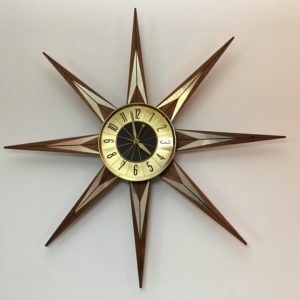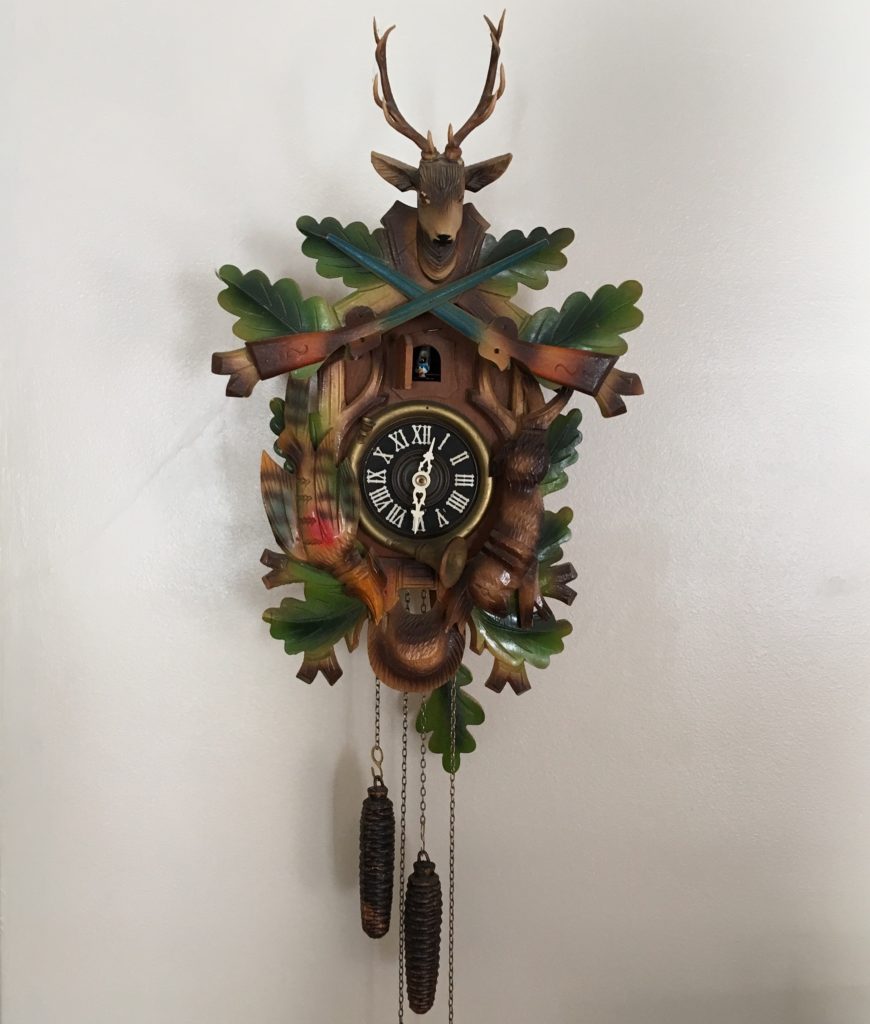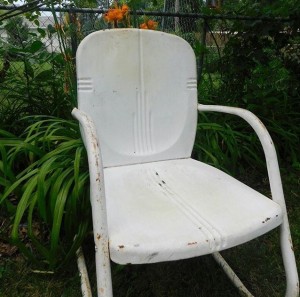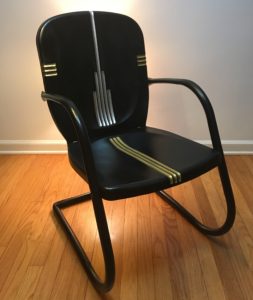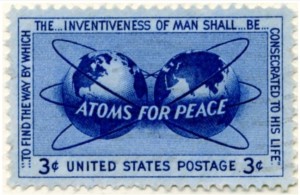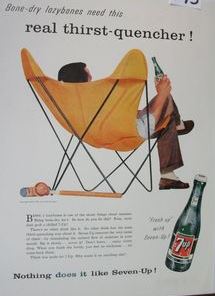For Jeffrey Ray. May your birthday be lavished in blessings and joy.

I painted this mint triangle to repair the damage on the cabinets caused by the microwave vent.
Note the West Bend Pantry Ware to the left, my Grandma Cochran’s apron to the right,
and an awesome Tiki Tea Towel on the stove by Nathanael Smith (nathanaelrosssmith.com).
My kitchen has a recurring décor theme: mint green triangles that mimic chevrons.
My home has a recurring style theme: everything mid-century.
My heart has a recurring nostalgia theme: memories imprinted there by my grandmothers.
Recently, as my life took an exhilarating new turn, these three themes unexpectedly collided, and I wondered if this was more than coincidence.
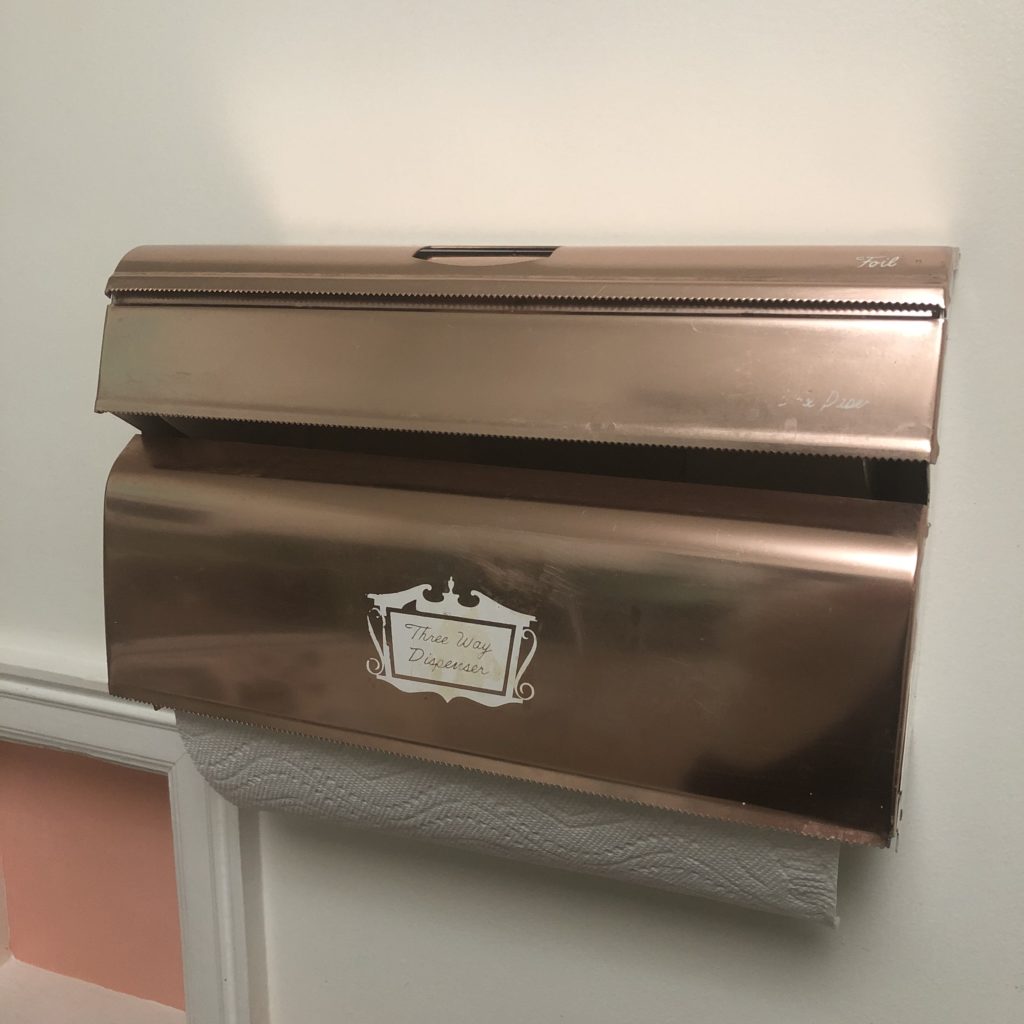
Grandma Cochran’s West Bend Three Way Dispenser
The second blog I posted on my website in October 2015 was devoted to West Bend Pantry Ware, molded aluminum accessories with a copper-colored finish. Pantry Ware was manufactured in the 1950s and 60s and takes on a range of kitchen container needs, from canisters to salt and pepper shakers to cake chests. I inherited most of my Pantry Ware from my Grandma Cochran and added pieces as I found them on eBay and in thrift shops. The piece I have memories of her using was the Three Way Dispenser (foil, wax paper, and paper towels), as it was attached to her kitchen wall from the day I was born until I removed it and took it home after her death.
West Bend wasn’t the only company molding aluminum in the mid-twentieth century. Mirro produced lovely canisters, cookie cutters, and Jell-O molds, also in a copper finish. Interestingly, however, no Mirro items were found in my grandmother’s estate, and I have no memory of her possessing any. The mid-century gods, who have blessed me with riches beyond belief in recent years, must have decided it was time and took my life in a lovely new direction late last fall.
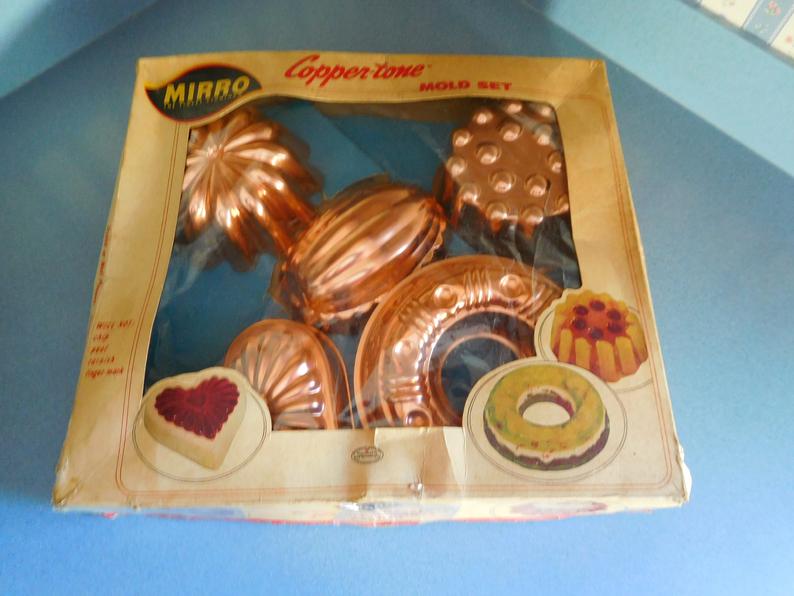
Mirro Copper-Tone Mold Set
The day after Thanksgiving a beautiful woman who set up her home in the 1950s and ’60s passed from this world. Exactly a week later I met her grandson. Unexpectedly, about a month after that, her three Mirro Jell-O molds landed in my hands. Delighted, I contemplated how to incorporate them into my kitchen and realized I now had two unique sets of molded aluminum from two unique grandmothers. I felt so blessed.
Adding another mint triangle in my kitchen was the obvious strategy to showcase the new aluminum pieces, and, fortunately, I had one lingering blank wall to do this upon. But I wasn’t satisfied with merely hanging the molds. They hadn’t survived sixty years to only be viewed as wall art—I wanted to use them! Since February was approaching, the obvious first piece to try was the heart.

The Mirro and West Bend pieces blend harmoniously at the Atomic Cape Cod.
I’ll never forget the last time I saw Grandma Cochran. I hugged her goodbye, not knowing I was a few days pregnant. She died a couple of months later, and my beautiful daughter was born that next February, on Valentine’s Day. I always felt like my grandmother passed herself on to my unborn child with that last hug and in effect gave me one of the loves of my life as she proceeded to Heaven.
So it’s not a stretch for me to believe that another grandmother—one I’d never met—also brought me a magnificent gift as she was passing to Heaven. Once again love manifested itself as a child of February, but this time as a fully-grown man. Then, remarkably, she made sure I received another physical icon of love and February—her Mirro aluminum heart.

My first molded Jell-O salad—a February delight!
Grandmothers give us incredible love and wonderful memories while they are in this world with us. When they pass they often leave behind their most cherished items. Sometimes we cling to those objects, thinking we’ll never receive anything again from these ladies who are so special to us. But wisdom has taught me that love transcends all, and grandmothers newly arrived in Heaven, who clearly have earned the good favor of God, are probably granted one miracle. How lucky am I to have received at least two of these beautiful miracles, two sweet, February babes.


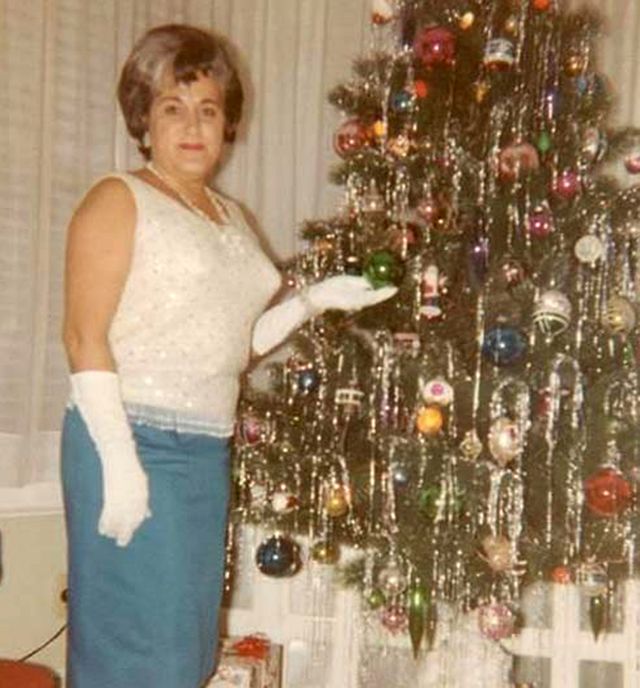 of Christmas conventions that often includes aluminum Christmas trees, Shiny Brite ornaments, and the magical yet often elusive color wheel. And, if you’re following any mid-century groups or hashtags on social media (you probably are if you’re reading this) you’ll be delighted by the occasional, random photo of a mid-century woman all glammed up, posing by her Christmas tree. There seem to be only about fifty or so of these photos in the social media jukebox, immortalizing these women twenty years into the current century.
of Christmas conventions that often includes aluminum Christmas trees, Shiny Brite ornaments, and the magical yet often elusive color wheel. And, if you’re following any mid-century groups or hashtags on social media (you probably are if you’re reading this) you’ll be delighted by the occasional, random photo of a mid-century woman all glammed up, posing by her Christmas tree. There seem to be only about fifty or so of these photos in the social media jukebox, immortalizing these women twenty years into the current century.




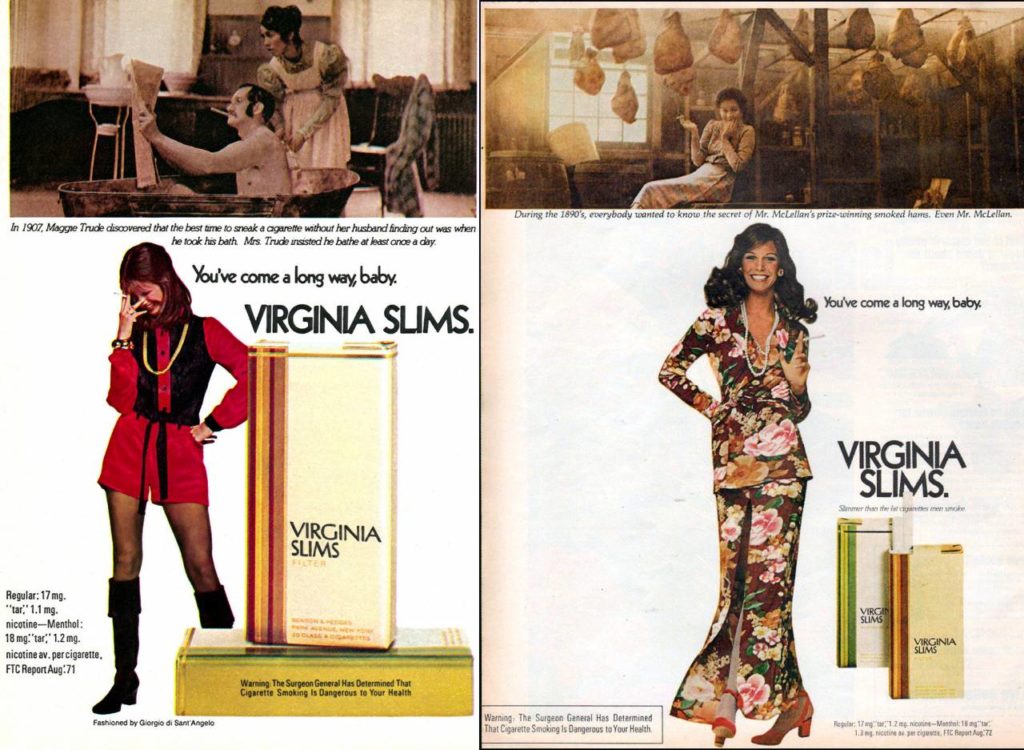



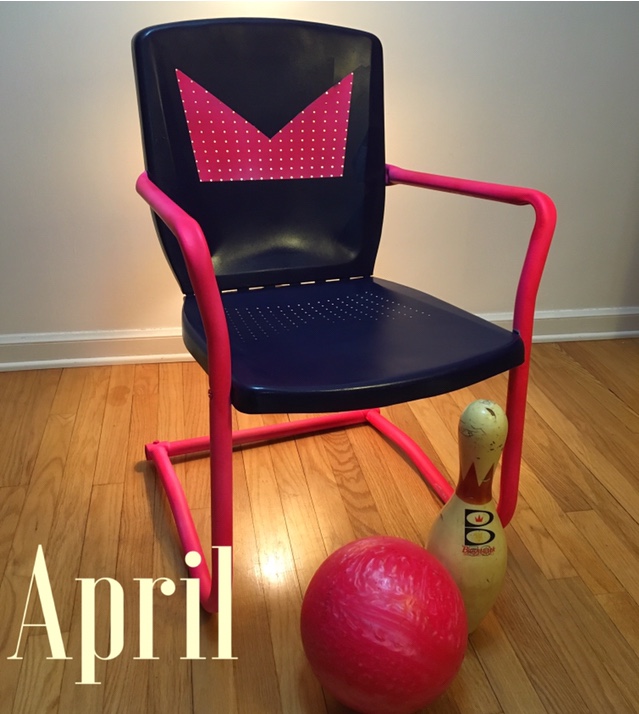









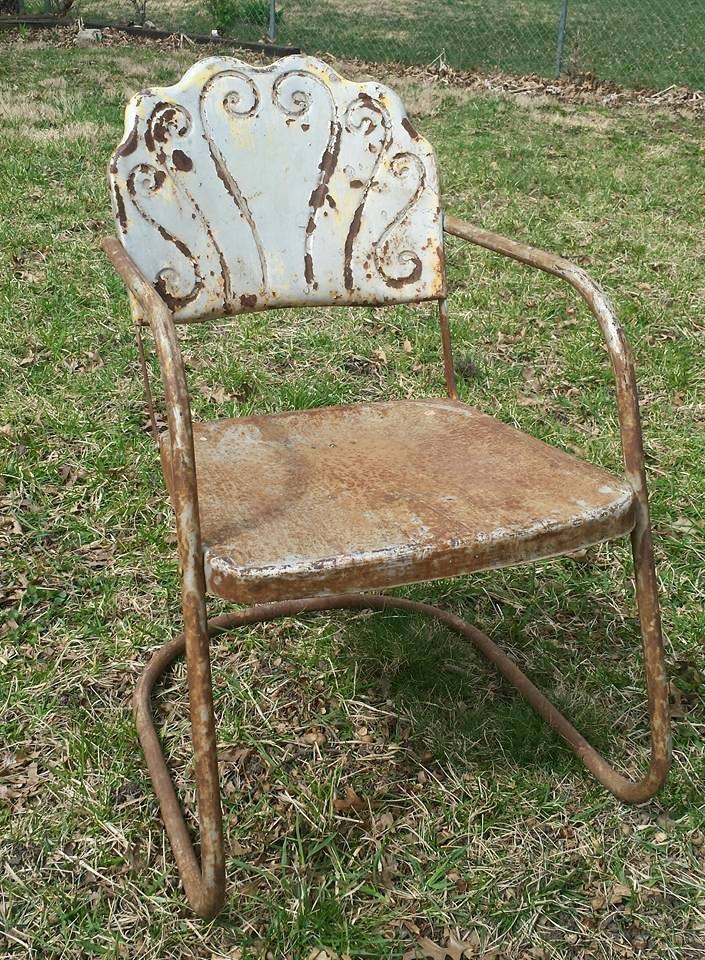
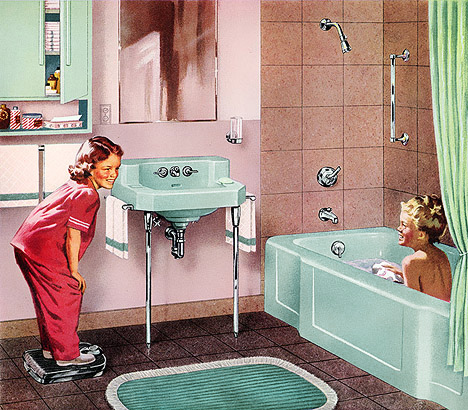 Yeah. A 1940s/50s pink and “Ming Green” bathroom.
Yeah. A 1940s/50s pink and “Ming Green” bathroom.
